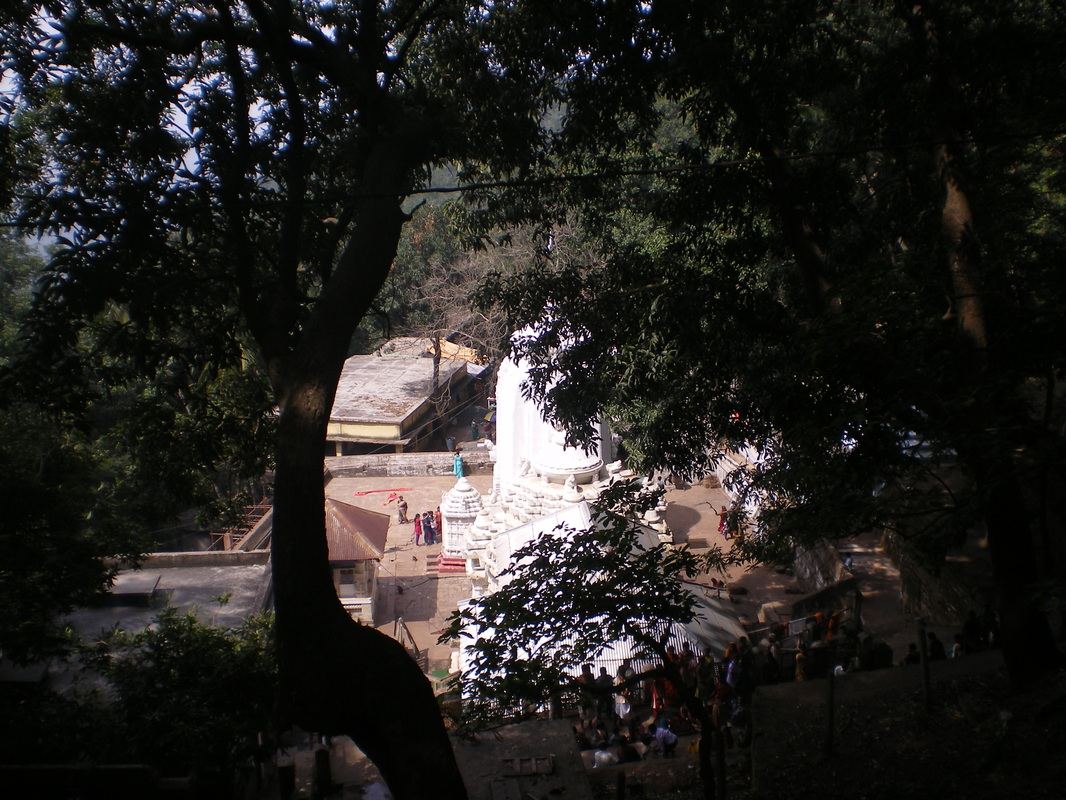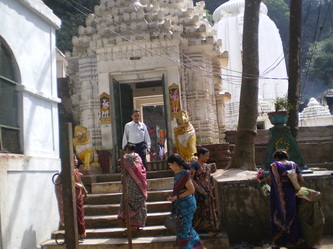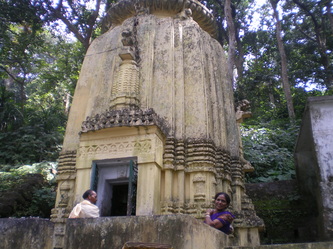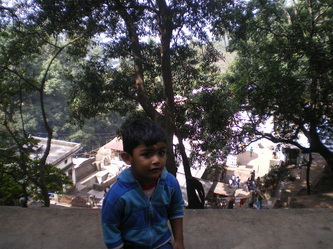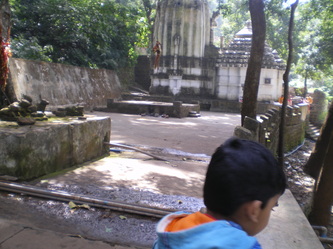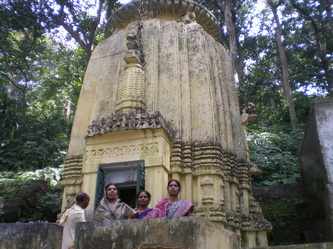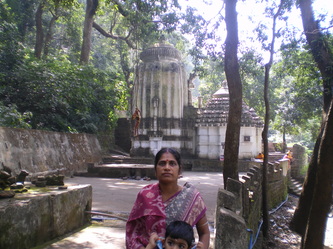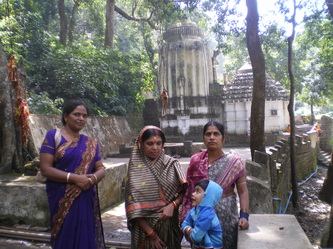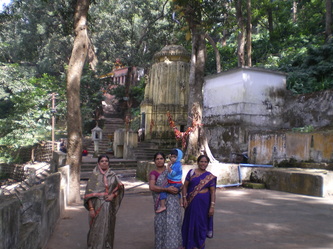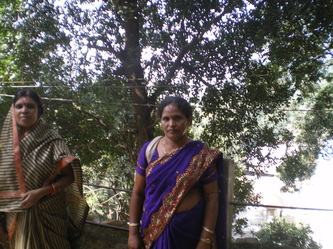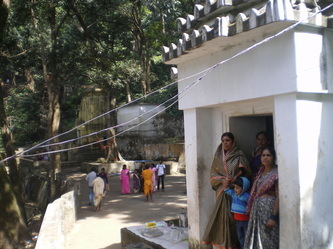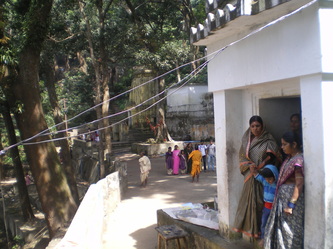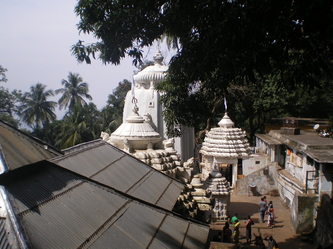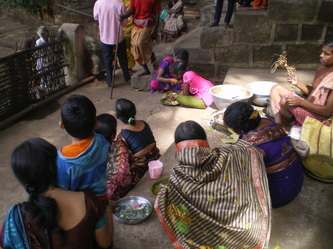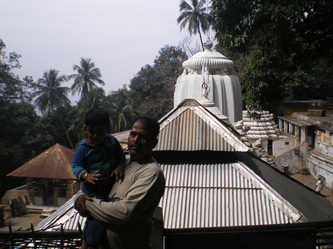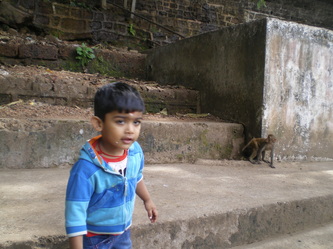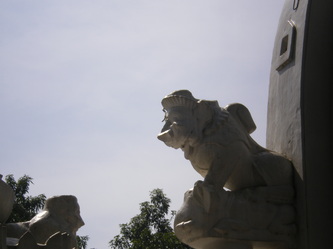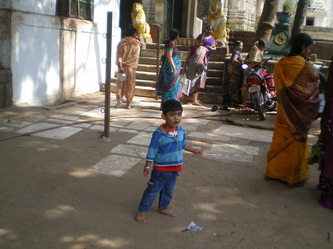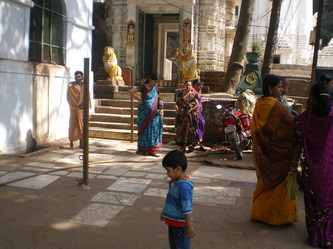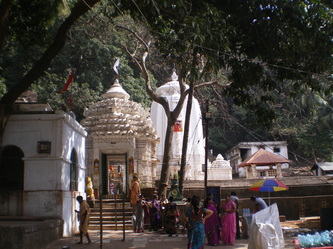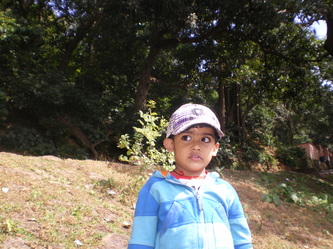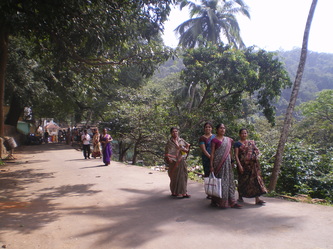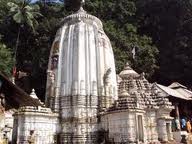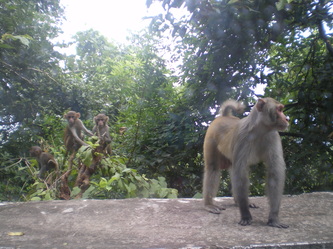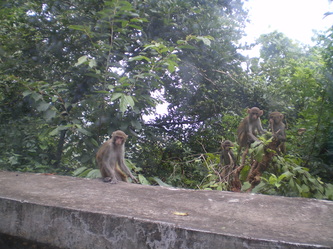Kapilas - The Abode Of Lord Chandra Shekhar
( Situated In The District Of Dhenkanal Of Odisha State )
|
|
|
Kapilas is a small mountain range in the Dhenkanal district of the state of Odisha ( India ) . It demarcates the boarder line between the districts of Dhenkanal and Cuttack . The entire mountain range and the regions on it's four sides are covered with dense forests having various kinds of trees and plants . All parts of this jungle near the end of Dhenkanal are known as " Kapilas Reserved Jungle " . We find many mountain peaks in this mountain range . The Kapilas peak is the highest peak among those . It's height is about 2239 feet or say 682 meters . At it's feet lies the temple of the famous holy shrine " Chandra Shekhar " . Many believe this to be the famous living place i.e. Kailas mountain of Lord Shiva and in course of time the word Kailas has undergone changes to become Kapilas .
The temple is located above 1500 feet ( 457 meters ) from ground level and on a high land of the peak . It is about 19 km. away from Dhenkanal district head quarter town . A dark peech road runs up to the temple through stiff and dangerous cliffs having almost twelve sudden bends . From the bottom of the mountain up to the temple , there are 1300 foot - steps as an alternative path to move up to the temple . As Kapilas is the abode of Lord Siva, this has been regarded as a great holy pilgrimage among the people of Orissa since many centuries. Detailed descriptions are in Kapila Samhita about this place. According to this treatise this place of pilgrimage is known as Kapilas. It is written in Mahabharat of Sarala Das during fifteenth century that Kailas is Kapilas.The anecdote as per Kapila Samhita runs as follows:
“Once the arbitrary king of Lanka was busy in praying Lord Siva in the Himalayas. No boon was granted to him even after his deep, severe and strenuous penance. He became very angry and decided to displace Kailas,the abode of Lord Siva. While carrying Kailas away some portion of the same fell here. Those mountain parts are acknowledged as Kapilas and living place of Lord Siva. Now- a- days the name of the reigning god of Kapilas is widely known as Chandrasekhar.But He is described as Sikhareswar in Kapila Samhita and also in some inscriptions.”
The height of the temple of Chandrasekhar or Sikhareswar is about sixty feet (1829 m).The façade of the temple has faced East and the temple has stood on a very narrow plane area. The mountain road and the steps are on its western side. There are an enclosure and a huge gateway on this side of the temple, having two lion statues guarding the temple gateway. This is the only entrance to reach the temple. No such remarkable stone carvings are on the body of the principal temple. On its southern, western and eastern sides one can behold the statues of the deities i.e.; Ganesh, Kartikeya and Parvati respectively.The making styles of these statues are quite marvelous and those are placed on the body of the temple. The servitors mistake the image of the side goddess, Parvati to be Ganga Devi.In front of the main temple we can come across Jagamohan and Bhoga Mandap (an altar) standing erect on pillars without any wall around it. On the western part of Bhoga Mandap there is a statue of bull made of black granite stone and donated by devotees. It has an inscription beneath it transcription of which has been made possible so far. Some say the statue of the bull has been brought in from Bhimnagar.The original statue of bull, however, is placed on a pillar in the middle of Bhoga Mandap.The Siva Linga adorns the inner space of the temple.
Two other temples are built for Lord Narayan and Lord Biswanath towards the eastern side of the main temple at a certain height.To reach there some stoe steps are made.The Narayan temple was built by the qeen of the then king of Dhenkanal,Dinabandhu Mahindra Bahadur.But the Biswanath temple (also known as Kashi Biswanath or Bisweswar) is very old.It is presumed that it is as old as Chandrasekhar temple.Fountains run down fom some places near the temples of Narayan and Biswanath.We have learnt from ancient scripts/scriptures that Ganga takes shelter under the nail of right toe of Lord Narayan.To establish this the fountain water has been made skillfully to pass through a small hole/outlet of the right leg of the statue of Lord Narayan.There is Manikarnika Kund (a small stone water tank) in between Narayan temple and Biswanath temple where fountan water is stored.It is considered very pious to bathe there.Water from this tak is being supplied through pipes to nearby Dak Banglow.The fountains flow downwards beside Bhoga Mandap.There are two water resorvoirs near it.One is known as
Papanasini Kund and the other is Payamrit Kund.Water in this place is very hygenic.
On a high altar near the lions gate two statues of Bhairav and Chamunda made of black crystal stone are established.
There are irrefutable records of proof regarding them who constucted Chandrasekhar temple.One tumbler is preserved near the temple which was once fixed on the temple top.It is not known when and how it was brought down.There is no sign of its falling down from the temple top either.Three records are inscribed on its body by king Narasingh Dev.The first one tells us that the temple was constructed during 1335-36 AD. The second one states that Narasingh Dev was a descedant of Anant Barman.It is difficult to ascertain which Narasingh Dev he was out of the four of Ganga Dynasty.Later it is traced that he was the third Narasingh Dev(1328-52 AD).
The temple is located above 1500 feet ( 457 meters ) from ground level and on a high land of the peak . It is about 19 km. away from Dhenkanal district head quarter town . A dark peech road runs up to the temple through stiff and dangerous cliffs having almost twelve sudden bends . From the bottom of the mountain up to the temple , there are 1300 foot - steps as an alternative path to move up to the temple . As Kapilas is the abode of Lord Siva, this has been regarded as a great holy pilgrimage among the people of Orissa since many centuries. Detailed descriptions are in Kapila Samhita about this place. According to this treatise this place of pilgrimage is known as Kapilas. It is written in Mahabharat of Sarala Das during fifteenth century that Kailas is Kapilas.The anecdote as per Kapila Samhita runs as follows:
“Once the arbitrary king of Lanka was busy in praying Lord Siva in the Himalayas. No boon was granted to him even after his deep, severe and strenuous penance. He became very angry and decided to displace Kailas,the abode of Lord Siva. While carrying Kailas away some portion of the same fell here. Those mountain parts are acknowledged as Kapilas and living place of Lord Siva. Now- a- days the name of the reigning god of Kapilas is widely known as Chandrasekhar.But He is described as Sikhareswar in Kapila Samhita and also in some inscriptions.”
The height of the temple of Chandrasekhar or Sikhareswar is about sixty feet (1829 m).The façade of the temple has faced East and the temple has stood on a very narrow plane area. The mountain road and the steps are on its western side. There are an enclosure and a huge gateway on this side of the temple, having two lion statues guarding the temple gateway. This is the only entrance to reach the temple. No such remarkable stone carvings are on the body of the principal temple. On its southern, western and eastern sides one can behold the statues of the deities i.e.; Ganesh, Kartikeya and Parvati respectively.The making styles of these statues are quite marvelous and those are placed on the body of the temple. The servitors mistake the image of the side goddess, Parvati to be Ganga Devi.In front of the main temple we can come across Jagamohan and Bhoga Mandap (an altar) standing erect on pillars without any wall around it. On the western part of Bhoga Mandap there is a statue of bull made of black granite stone and donated by devotees. It has an inscription beneath it transcription of which has been made possible so far. Some say the statue of the bull has been brought in from Bhimnagar.The original statue of bull, however, is placed on a pillar in the middle of Bhoga Mandap.The Siva Linga adorns the inner space of the temple.
Two other temples are built for Lord Narayan and Lord Biswanath towards the eastern side of the main temple at a certain height.To reach there some stoe steps are made.The Narayan temple was built by the qeen of the then king of Dhenkanal,Dinabandhu Mahindra Bahadur.But the Biswanath temple (also known as Kashi Biswanath or Bisweswar) is very old.It is presumed that it is as old as Chandrasekhar temple.Fountains run down fom some places near the temples of Narayan and Biswanath.We have learnt from ancient scripts/scriptures that Ganga takes shelter under the nail of right toe of Lord Narayan.To establish this the fountain water has been made skillfully to pass through a small hole/outlet of the right leg of the statue of Lord Narayan.There is Manikarnika Kund (a small stone water tank) in between Narayan temple and Biswanath temple where fountan water is stored.It is considered very pious to bathe there.Water from this tak is being supplied through pipes to nearby Dak Banglow.The fountains flow downwards beside Bhoga Mandap.There are two water resorvoirs near it.One is known as
Papanasini Kund and the other is Payamrit Kund.Water in this place is very hygenic.
On a high altar near the lions gate two statues of Bhairav and Chamunda made of black crystal stone are established.
There are irrefutable records of proof regarding them who constucted Chandrasekhar temple.One tumbler is preserved near the temple which was once fixed on the temple top.It is not known when and how it was brought down.There is no sign of its falling down from the temple top either.Three records are inscribed on its body by king Narasingh Dev.The first one tells us that the temple was constructed during 1335-36 AD. The second one states that Narasingh Dev was a descedant of Anant Barman.It is difficult to ascertain which Narasingh Dev he was out of the four of Ganga Dynasty.Later it is traced that he was the third Narasingh Dev(1328-52 AD).

